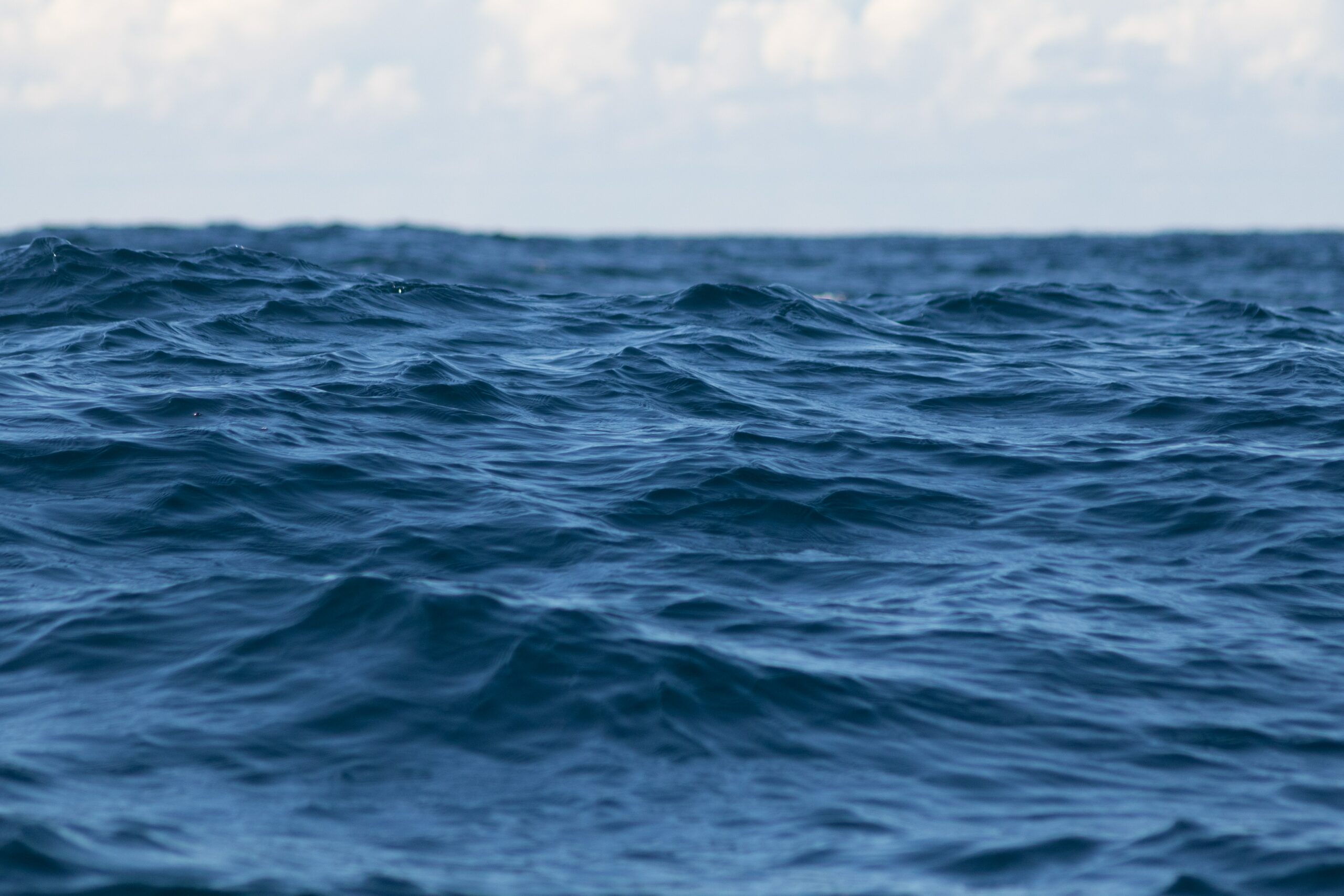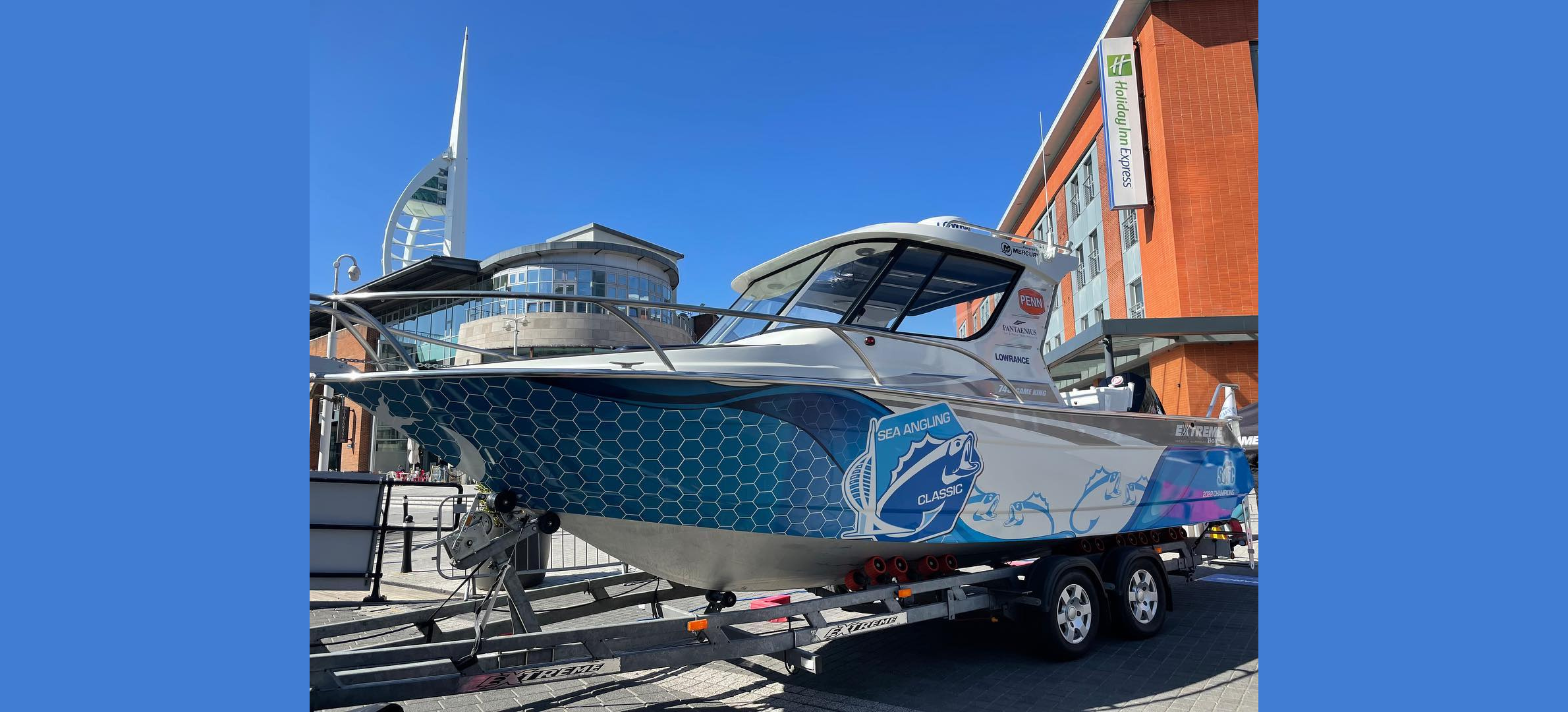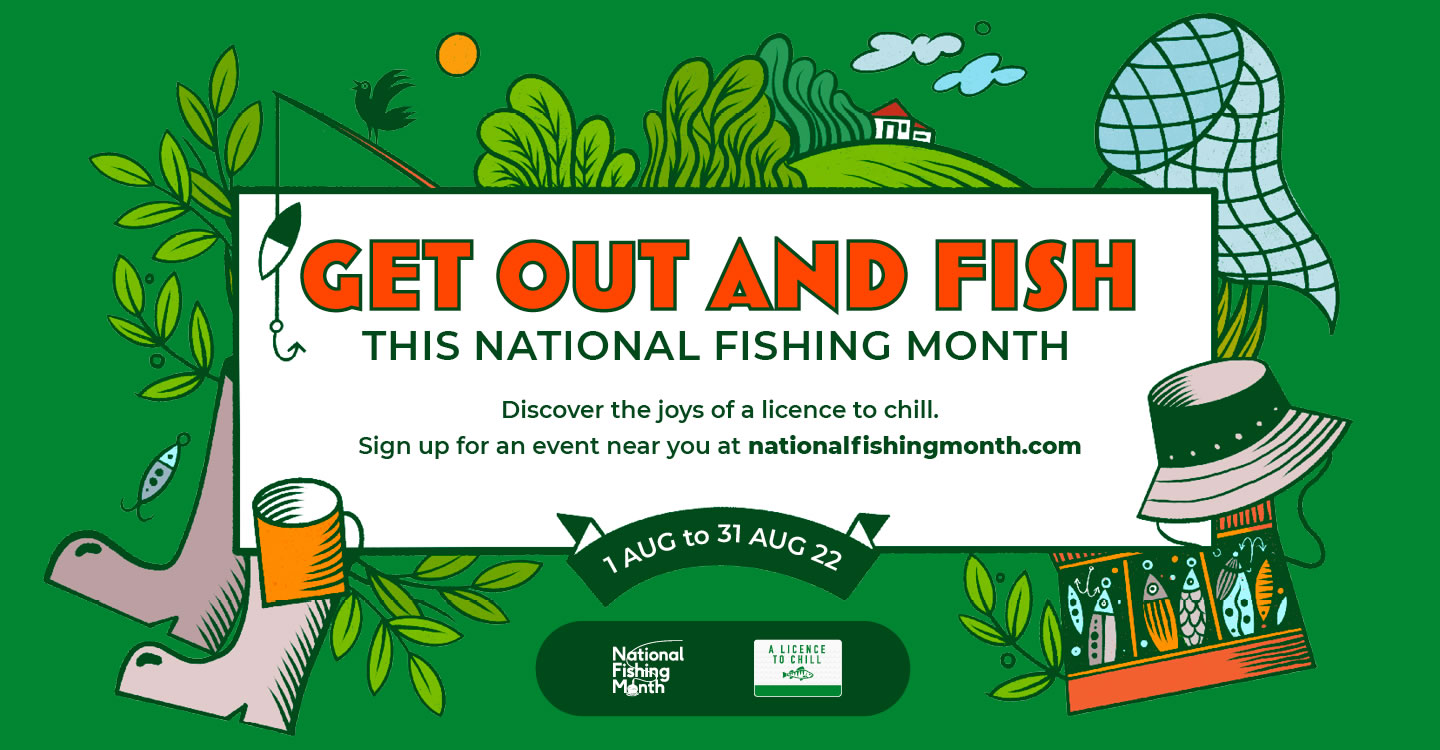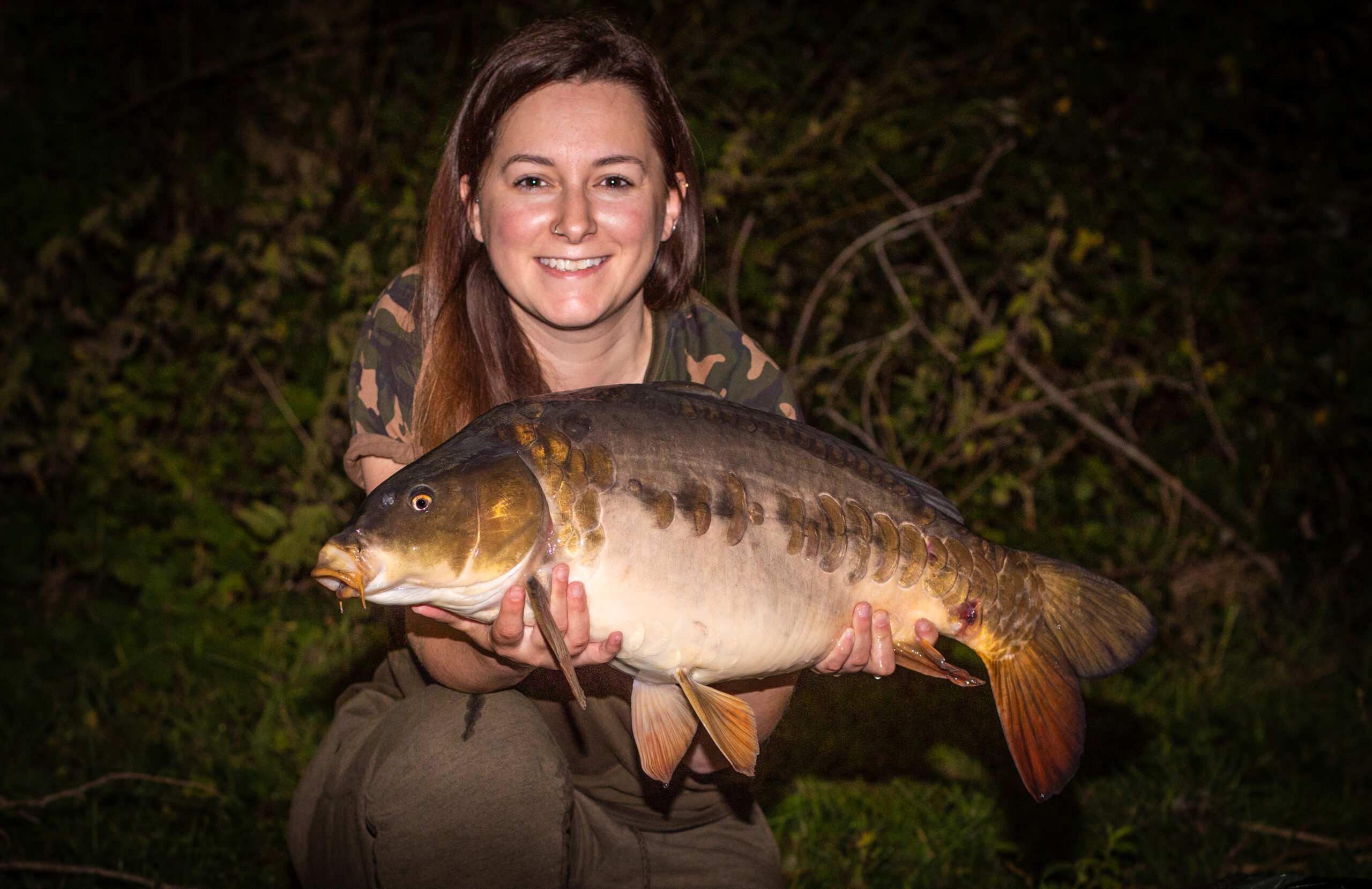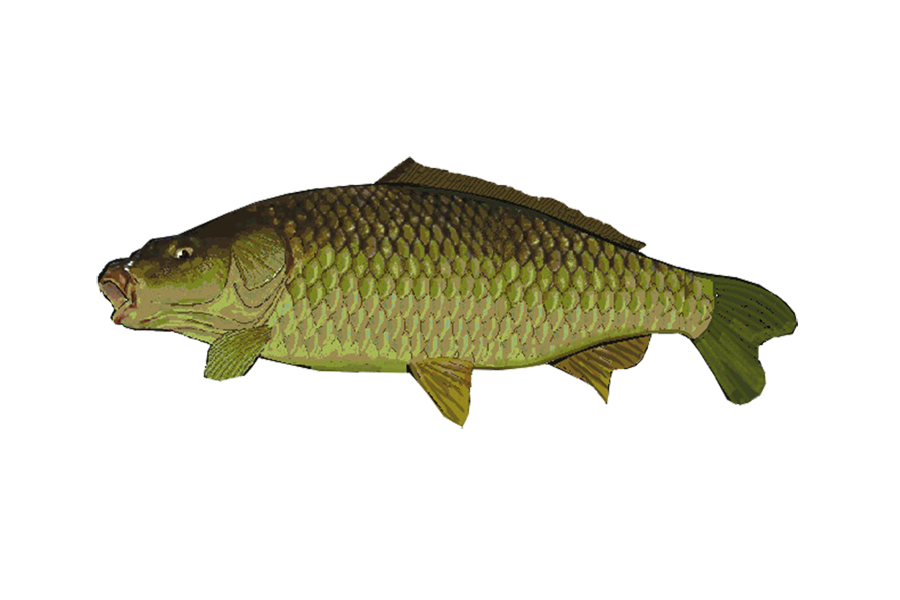
Get Fishing Resources - Fishbook
Fishbook: Carp

‘Fishbook’: Our species-guide series based on “Get Fishing”
the brilliant how to fish book by Allan Sefton
We profile the UK’s most common as well as some lesser-known fish species to help newcomer anglers find out more about fish that can be caught in our lakes, canals, rivers, ponds and sea.
Understanding the kinds of fish you might catch will add interest and could even make your fishing easier! Here you’ll find out more about…
CARP
Name:
Carp
Scientific name:
Cyprinus carpio
Life span:
Around 20 years
Typical size:
Between 2-20lb in most fisheries
British record:
Common carp 64lb 6oz; mirror carp 68lb 1oz; leather carp 54lb 8oz
Waters:
In ponds and lakes largely, throughout the UK but not in north Scotland. Numerous commercial fisheries around the country are well-stocked with carp
Interesting fact:
All carp have a big telescopic mouth, with twin whiskers called barbels or barbules, packed with taste buds, behind tough lips
About Carp
Carp fishing is big business. More UK anglers chase carp than any other fish. They spend millions of pounds on tackle, bait and access to carp fishing. Nearly every coarse fishery in the UK is stocked with carp – a species easy and cheap to rear.
Carp are loved by anglers. Small, hungry carp in heavily stocked ponds are easy to catch, but they are intelligent, and small populations in big waters grow into giants. The big ones learn to avoid anglers’ baits, and become really difficult to catch, a challenge which keen carp anglers relish. They pay handsomely to catch carp in such places, and some travel the world to warmer countries where carp grow even bigger.
Best to start on small and hungry carp weighing from a few ounces up to 3-4lb. These are the usual size of carp stocked in most UK fisheries.
The common carp is a plump, butter-coloured fish with a splash of burnt orange on its paddle-like tail. Fish-keepers have reared carp for thousands of years so there are now many other varieties.
· Mirror carp have a few big scales, often along their lateral (side) line.
· Leather carp appear to lack scales altogether.
· Goldfish, ghost carp and koi carp are fancy variants, but they are found occasionally in fishing lakes.
Most carp are warm water fish and tend to be inactive and hard to catch in winter so many commercial fisheries are now stocking an ‘F1 Carp’ that continues to grow, feed and keep anglers happy in the colder months.
Carp are greedy feeders. All carp have a big telescopic mouth, with twin whiskers called barbels or barbules, packed with taste buds, behind tough lips. These mouthparts are designed to root down into mud on the bed of lakes to dig out food, both large and small. Behind their upper lip is a flap of skin. This traps insect larvae and other prey as they blow out mouthfuls of mud or gravel.
Further down their throat are strong pharyngeal teeth that crunch up hard-shelled molluscs or crustaceans, such as crayfish. These teeth are the reason carp are happy to eat specially-made angling baits, known as ‘boilies’ or ‘pellets’, hardened to avoid being eaten by small fish. They also eat ‘particle’ baits such as nuts or seeds.
Carp eat many different things but, as any carp angler knows, they can be frustratingly selective when the mood takes them.
They are not limited to bottom-feeding. Carp are just as happy, especially in warm weather, to delicately sip down floating insects, snails or anglers’ baits from the surface or from the underside of floating lily leaves.
Although they see well in clear water, carp are at home in muddy water where their acute sense of smell and sensitive mouths help them to find, sample and select their food. This ability also helps them to avoid fishing lines and hooks, and to rapidly spit out suspicious baits.
But beginners do not have to worry. Small, hungry carp are greedy fish and shoals of them can be stimulated into a feeding frenzy by clever baiting with free offerings and groundbait.
Visit the rest of the How To Fish video gallery here to learn new tricks and discover more about the basics of angling.
Find out more about:
Read more about how you can get into coarse fishing. Alternatively, find a venue near you where you can #getfishing!
Some of the above content is taken from the new book, Get Fishing – the ‘how to’ guide to Coarse, Sea and Fly Fishing by Allan Sefton published by Merlin Unwin Books. This colourful, lively book is aimed at complete beginners of all ages, those who have been out fishing a couple of times and want to take it further and families of all abilities. It’s also packed with top-tips and info that make it useful for more experienced anglers too. Find out more about, and purchase a copy of the book here.
Header image thanks to David Overland and text reproduced with permission and © Merlin Unwin Books.









